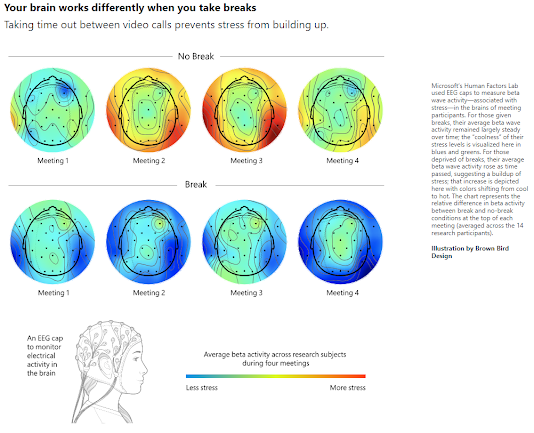In the modern workplace, meetings have become a staple of professional life, serving as a means to collaborate, communicate, and strategize. However, recent research sheds light on the adverse health effects associated with excessive meetings, both in-person and virtual. From cognitive strain to burnout, the toll of meetings on employee well-being is undeniable. Let's delve into the insights provided by recent studies and explore strategies to mitigate these health risks.
1. Cognitive Overload and Mental Fatigue
Studies such as Microsoft's Work Trend Index and research from the American Psychological Association highlight how prolonged meetings can lead to cognitive overload and mental fatigue. The constant influx of information, coupled with the need to process complex ideas and make decisions, can overwhelm the brain and impair cognitive function over time.
Solution: Implementing shorter, more focused meetings with clear objectives
can reduce cognitive strain. Yaylo can reduce meeting length by its AI-powered
recommendations which improves meeting clarity and execution. It offers a
relaxed environment to collaborate in meetings where everyone can participate
multiple times. It encourages active participation and provides opportunities
for breaks to allow attendees to recharge and maintain mental clarity.
2. Zoom Fatigue and Virtual Meeting Exhaustion
The transition to remote work has led to a surge in virtual meetings, exacerbating feelings of fatigue and burnout among employees. Stanford University's research on "Zoom fatigue" identifies factors such as prolonged eye contact, constant self-view, and the absence of nonverbal cues as contributors to virtual meeting exhaustion.
Solution: Consider alternative communication channels, such as asynchronous
collaboration tools, to minimize reliance on synchronous meetings. Yaylo is
designed for asynchronous meeting collaboration. It can reduce the video
meeting (synchronous communications) duration and at times can completely
replace them.
3. Meeting Overload and Burnout
The proliferation of meetings, both in-person and virtual,
has contributed to a culture of "meeting overload" in many
organizations. A study referenced by Harvard Business Review highlights how
excessive meeting culture can contribute to burnout and decreased productivity.
Another study referenced by Digiday highlights how excessive meetings can lead
to burnout, decreased productivity, and diminished employee well-being. The
constant barrage of meetings leaves employees with little time for focused
work, leading to feelings of overwhelm, frustration, and disengagement. This
"meeting overload" can have detrimental effects on mental health and
overall well-being.
Solution: Adopt a "less is more" approach to meetings by prioritizing efficiency and effectiveness. Evaluate the necessity of each meeting and consider alternative formats, such as brief check-ins or asynchronous updates, to reduce meeting frequency and alleviate burnout. We consider Yaylo the best place to start a meeting. After a meeting commences in Yaylo, participants can assess the progress and preparedness to determine whether a live meeting is necessary, or if further progress should be made in the Yaylo Meeting before convening in person. This can greatly alleviate the meeting overload challenges.
In conclusion, while meetings are an essential aspect of
collaboration and communication in the workplace, they also pose significant
health risks if not managed effectively. By using Yaylo which implements
strategies to reduce cognitive overload, alleviate virtual meeting fatigue, and
tackle meeting overload, organizations can create a meeting culture that
prioritizes employee health and productivity.
References:
- Microsoft Work Trend Index: https://www.microsoft.com/en-us/worklab/work-trend-index/brain-research
- Stanford University study on Zoom fatigue: https://news.stanford.edu/2021/02/23/four-causes-zoom-fatigue-solutions/
- Digiday article on tackling burnout through
meeting reduction: https://digiday.com/marketing/productivity-is-through-the-roof-why-companies-are-waging-war-on-meetings-to-tackle-burnout/
- American Psychological
Association article on the psychological impacts of meetings: https://psycnet.apa.org/fulltext/2024-19786-001.html



Comments
Post a Comment